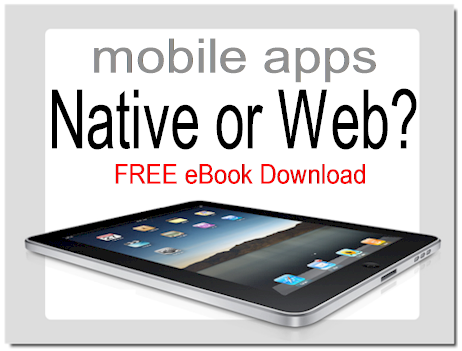For years now, Apple has been trying, without much success, to discourage the use of “crap app” generators to build native apps. While it’s certainly more difficult to get simple, branded content-based apps approved, the frameworks to build poorly differentiated apps continue to emerge and seemingly at a higher velocity. In the last few weeks alone I was pitched by appsbar, Bizness Apps, WidgetBox, and ShoutEm; yes, “ShoutEm” – that’s not a typo. Before this batch showed up on my doorstep, I had already experimented with five other native iOS generator solutions. In this article I’m not going to go into an in-depth review of every app framework available.
There is a troubling (and growing) collection of app frameworks that make it possible to sustain a tsunami of mostly worthless apps that fail to achieve business objectives and contribute little to the app market model and the general trend toward app-centric computing. Apps with generator lineages typically fail to produce successful solutions for the businesses that use them. Feel free to nominate apps (in comments) that prove me wrong, and make sure you indicate the app generator you used to achieve a positive outcome.
As you can tell, I’m very skeptical about all the products in this space. However critical I may seem, I’m open-minded and ready to have an interview to see if your app generator solution rises above the rest and also demonstrates examples of successful apps.
In a report from Mac Rumors more than a year ago,
“Between the developers I spoke to, the consensus was this: Apple doesn’t appear to be opposed to ‘app generators’ and templates per se, but in the last month or so it has started cracking down on basic applications that are little more than RSS feeds or glorified business cards. In short, Apple doesn’t want people using native applications for things that a basic web app could accomplish.”
I also wrote about this predictable shift by Apple concerning iPhone apps in 2010.
It was predictable; eventually Apple would have to raise the minimum quality and uniqueness of native apps. Imagine twenty thousand apps that are nothing more than RSS feed-driven attempts to push worthless content through iTunes. Free or not, the days of cookie-cutter apps that contribute nothing to the topology of unique and useful extensions of the iPhone platform, are coming to an end.
This makes sense – Apple wants to see apps that provide users with superior mobile experiences. And when it comes to business apps on iPad, Apple is unlikely to give you discretionary latitudes that include a simple content delivery objective.
While few articles have appeared recently about the abundance of crappy apps, the tsunami of app frameworks (which require no coding, no developer skills, and apparently no creativity), you’d think there would be a correlated spike in app rejections, but I can’t find any data to suggest this is happening. Furthermore, iPhone Developer Labs reports on the 15 most common app rejection reasons, and poor quality apps from generators are not mentioned.
It’s entirely likely that generated apps are approved at a nominal rate, but that doesn’t necessarily mean they will stay approved or meet any business objectives.
What is an App Generator?
To be clear, online services and products that enable anyone to login, add some content, upload images and logos, and generally configure a mobile [native] app experience, fall into the category of “app generators”. I tend to exclude web app generators as they fall outside the scrutiny of the app store approval process. Without question, however, there are certainly many mobile web app generators that produce crappy apps.
The Market Wants Apps, ergo, The Market Needs App Generators
While I have great disdain for crap app makers, I realize there are some redeeming business qualities, especially for the millions of small business owners who are budget and technology-constrained. Philosophically, I understand why app generator companies have emerged in the marketplace, and I’m always willing to listen and experiment with these products to better advise my clients and my readers. However, I will continue to approach app generators with significant skepticism and critical thinking.
I believe app generators are becoming more available and three key business drivers are causing this -
- We are rapidly becoming an app-centric global society (see App-centric Enterprise).
- There’s an abundance of businesses that need apps; there’s a shortage of native app developers. Something’s gotta’ give… [read more if you want the details]
- Competition is heating up in the mobile sector; businesses without mobile support will die. Without apps, businesses will quickly become irrelevant in their market segments.
Despite the underlying suggestion and strong historical evidence that app generators produce, for the most part crappy apps, app generators have served a useful purpose in some cases. Some of the app generation tools provide legitimate avenues to rapid development and deployment of a quality app that serves its target audience well. Some firms are actually building humans into the process, a pre-app-store-approval process to make sure app designers are more likely to get the nod from iTunes.
Generators Have Low Ceilings
It’s very difficult to create an app generator that can do everything. Any attempt to raise the ceiling tends to overly complicate the non-programming user interface. It’s a paradox of course; the more it tries to do for you, the more you need to tell it what to do, and that defeats the purpose of a tool that generates everything.
With a low ceiling and a general philosophy that “one size fits all”, the market segment is predisposed to build a lot of sameness. Every app generator seems to have subtle differentiators, but these features are not significant enough to encourage the creation of highly differentiated apps.
In my white paper I cover the differentiators in great detail and demonstrate why some generators will create better results for certain mobile requirements.
 Misinterpreting [Mobile] Customer Requirements
Misinterpreting [Mobile] Customer Requirements
The worst mistake business people make when attempting to build a useful mobile app with a generator is assuming that customers want their web site experience in an app. This is silly thinking.
Customers want an app experience that is relevant to your business in a mobile context. For example, if you run a shuttle service for skiers, the things your customers will be interested about on your website, are likely to be far different from the things they might want to do on your mobile app.
Customers in a mobile context might want to see your blog, get the latest ski and snowfall reports, watch videos of skiing, track your Twitter feed for schedule updates and recent powder dumps, and perhaps contact info when your flight is running late. Skiers are likely to create an inbound reservation from a desktop, whereas, they are far more likely to book a return reservation from their smart phone, especially if you paste a QR code to the backs of every seat so they can grab your app with a single tap.
Some app generators do more harm than good – they can help businesses make this mistake by actually mimicking web site structures and general navigation and content architectures. Don’t fall into this trap – take the time to create a useful and engaging experience based on real customer needs. Then translate those requirements into an app.
Deep Dive
As I mentioned above, because there are so many app generators and an abundance of features and app development issues, I decided to provide the in-depth arguments in a white paper. Sign up for it today and get your copy the second it is finished. Also, please nominate app generators you’ve had success with.






















Thank you Bill for pointing out this problem. Like probably many others I’ve been lured by the promise of auto-generated iPhone apps, only to find most of them, as you so clearly pointed out, are crap.
I hope this article gets wide distribution, this is a message that needs to be heard!
I was signed up for ShoutEm and went through the entire process only to be rejected from iTunes for having an app no different than it would be in Safari. I totally understand the app was useless but the idea of the self serve app builder intrigued me so I went for it and got rejected and shoutEm was like “oh well, we can’t do anything.” Apple is totally cracking down. At least I wasn’t submitting a fart app.
Very interesting reading. I can’t seem to download your white paper though?
Zahid,
Sorry, that paper (previously mentioned) was never published. We couldn’t find sponsors who could agree on what would be in the paper.
I’ve had some success using Bizness Apps. We currently have a few apps in the app store. A couple for medcal marijuana dispensaries that allows customers to get the menu which changes daily as wel as getting rewards for coming back using check-in abd QR code based coupons. Also we’ve done apps for dentist that allows people to book appointments on the apps and also get rewards similar o the above mentioned. Bizness apps has around 40 or so features everything from 1-touch calling to map based function, in app ordering and allot of other things. I see where you’re coming from with this, but some of them can when coupled with some thought create a valuable tool for consumers of a particular brand. IMHO
Good to know.
Certainly the tool cannot be blamed for all the poorly designed apps out there, so your point is good. A little thought and some planning with some good graphics can transform a crap-app into something that actually meets business requirements.
i’m a bit late to the conversation but glad i came across it. i’ve been asked by my boss to recommend just 3 generators that we could use in a workshop with young people with websites who are interested in creating apps. It would be very disappointing if, after their work, their apps were rejected for no fault of their own. Can you advise please?
Jemma,
>>> their apps were rejected for no fault of their own. <<<
Anyone creating apps must also accept the responsibility for the disposition of those apps. Most of these app generators have strong disclaimers – if you aren’t paying for their services, they have little obligation to perform. Ergo, the reason I tend to label them as “crap app generators”.
So what’s the remedy in your case?
In my view, help your constituents develop a keen understanding of the pitfalls of app store submission along with a backup plan that includes ways to publish mobile apps without needing approval from Apple.
There are a number of HTML5 frameworks that allow you to create mobile apps that can run on web servers and also become candidates for native (XCode) compilation. Also, have them look closely at Hype, an HTML5 development platform.
–bf